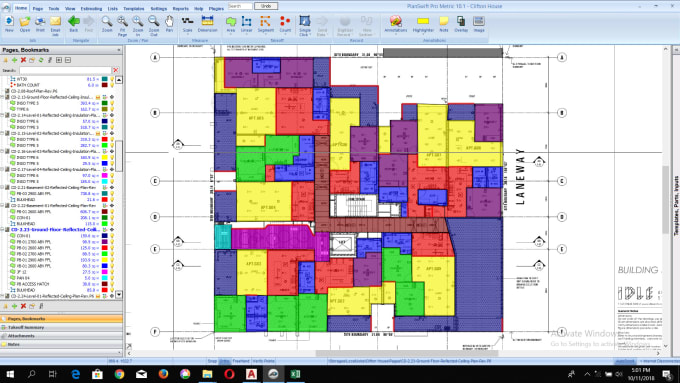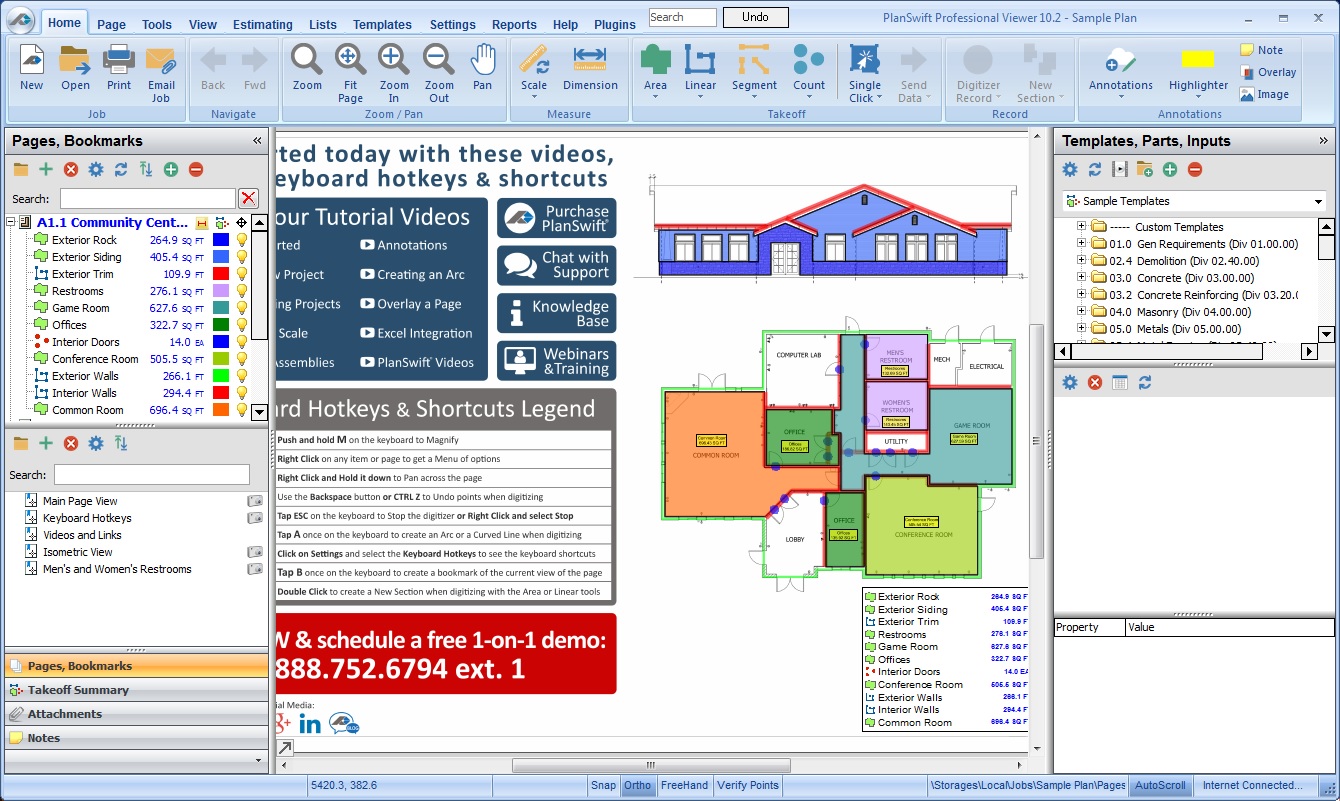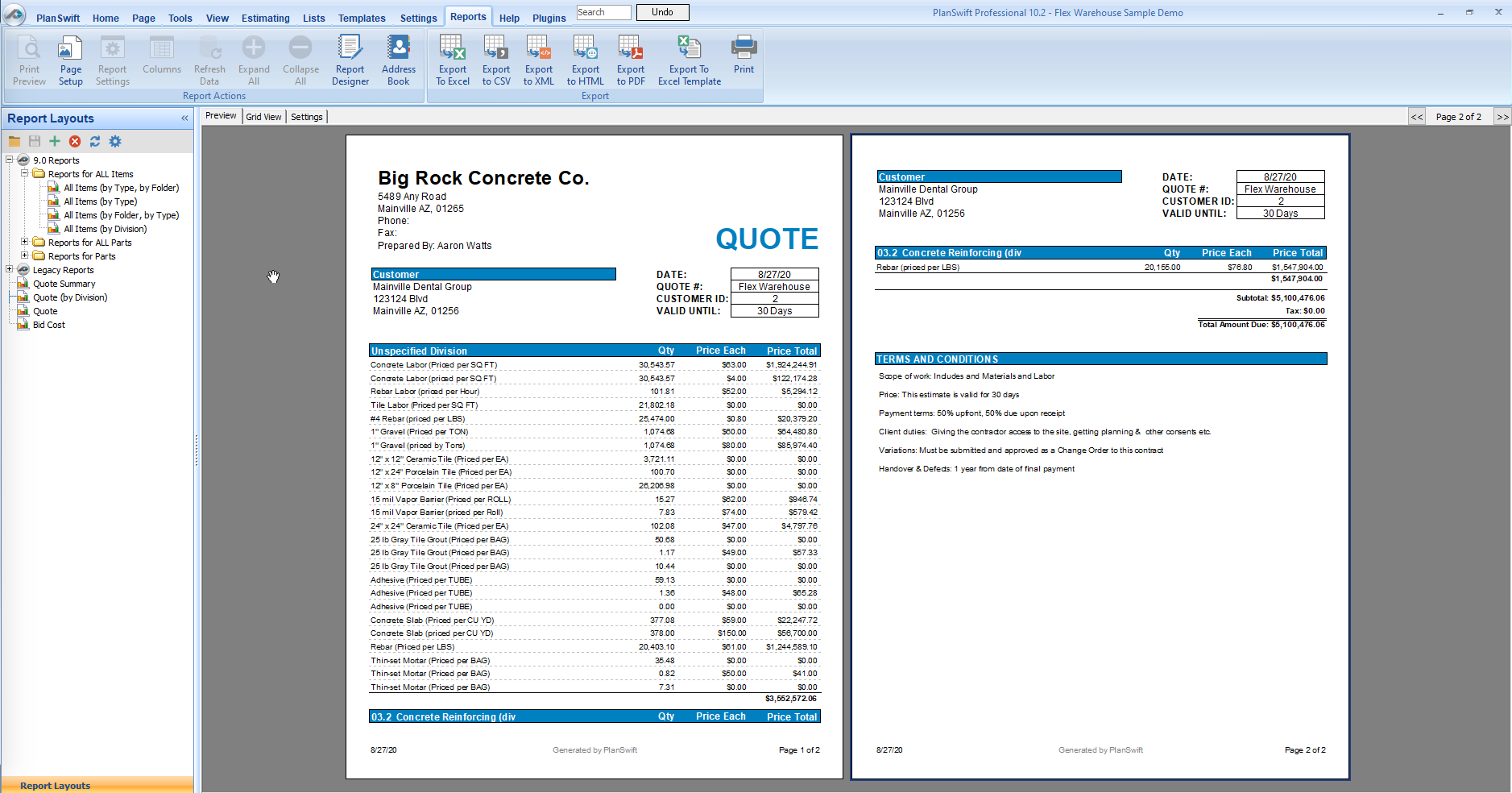


OST does have a “grab” tool which they call “pan” but it’s only activated through a toolbar at the perimeter of the display area. Planswift assigned the right mouse button as a “grab” that let the user move the sheet around within the display window.

Actually moving the displayed area on-screen can be a surprisingly counter-intuitive process. Zooming in and out to see what’s going on is only half the struggle. I’m currently using On Center’s On Screen Takeoff which doesn’t recognize the zoom toggle. It’s been a while since I used Planswift, but it used to allow zoom commands from the zoom toggle on my Microsoft Wireless Comfort keyboard. Mousing across the entire screen to access the buttons is slower than using the scroll wheel.

You’re forced to stop everything you’re doing to futz with the zoom buttons so you can see where to continue your work. It’s unspeakably frustrating to be focused on items in the middle of the displayed area and controlling the zoom with a toolbar button that’s somewhere on the perimeter of the program window. Waiting at the edge of the border will occasionally cause the program to side-scroll but it’s almost always too fast or too slow to be useful. A continuous measurement like a long wall, or a large area will quickly reach the border of the displayed area. The reality is that most accurate measurements will require zooming in. I’m sure someone out there uses the toolbar buttons, but I’ve never met them. Most programs offer the user two ways to adjust the zoom toolbar buttons, and scroll wheel. The current solution is to adjust the zoom in and out as needed which feels like you’re trying to read the plans with a periscope.Īs you might have guessed, there are some design issues… Imagine holding an open newspaper at arms’ length and trying to read the top left paragraph of print and it will be obvious why bigger isn’t always better. Typical architectural standard sheet sizes like ARCH D (24″ x 36″) or ARCH E1 (30″ x 42″) would require a 46.47″ and 51.63″ monitor respectively to display at 100% size.Įven if your company would pay for such a large monitor, it wouldn’t be convenient to work at the extreme corners of the display. Digital takeoff systems are run on computers just like those used in accounting, project management, scheduling, or marketing.ĭigital takeoff systems have one obstacle that creates a unique user experience, the plan area is nearly always larger than the computer’s monitor. By extension, the familiar scales, calculators, measuring wheels, digitizers, and ubiquitous colored pencils all get used much less now. For many estimators, the shift from paper plans to digital or “on-screen” takeoffs brought about a fundamental change to how they spend their days.


 0 kommentar(er)
0 kommentar(er)
